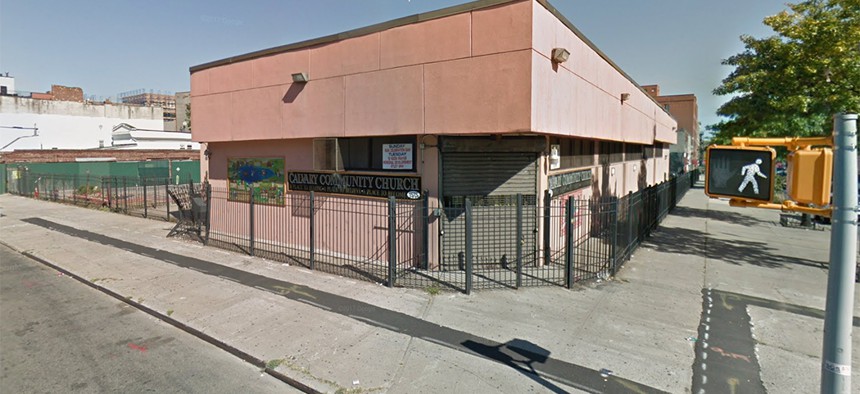In the back of Calvary Community Church in Crown Heights, Brooklyn, a fence emblazoned with a mural-sized sign that says “THE MISSION IS POSSIBLE” in bright block letters faces an empty gravel lot. Calvary, a church in the ungentrified eastern part of the neighborhood, sits on a plot of land that almost stretches over a quarter of a block, but the one-story, beige stucco building sits on a sliver of that space. Brooklyn Borough President Eric Adams hopes to turn that free space into affordable housing.
Calvary is one of many churches in the borough that Adams has selected as a part of his Faith-Based Development Initiative, which provides funding and other support to help churches navigate the complicated zoning process involved in building affordable housing developments. Adams’ office said it has identified more than 2,700 tax lots across Brooklyn that are associated with houses of worship, with hundreds of those that may align with the program.
Riding past the church on his bike during a recent interview with City & State, Adams said, “Our goal, one of the initiatives that we’re doing, one of the largest landowners of people of color are the churches. And what we’re showing them how to do is how to use the land.”
Adams granted $500,000 in funding for construction of a 154-unit mixed-use affordable housing development on Calvary’s open lot. Adams invested $1 million in fiscal year 2017 funds from Brooklyn Borough Hall to construct affordable housing on church lots. A year and a half later, he expanded the program, calling for the creation of zoning map amendments that would facilitate True Holy Church to create a mixed-use residential building.
The program aligns with a role many Brooklyn church leaders already play as financial advisers, offering classes on monetary and property management, and even promoting real estate sales between congregants. Through Adams’ plan, churches have begun to expand their capacity as a pillar of financial stability in Brooklyn.


